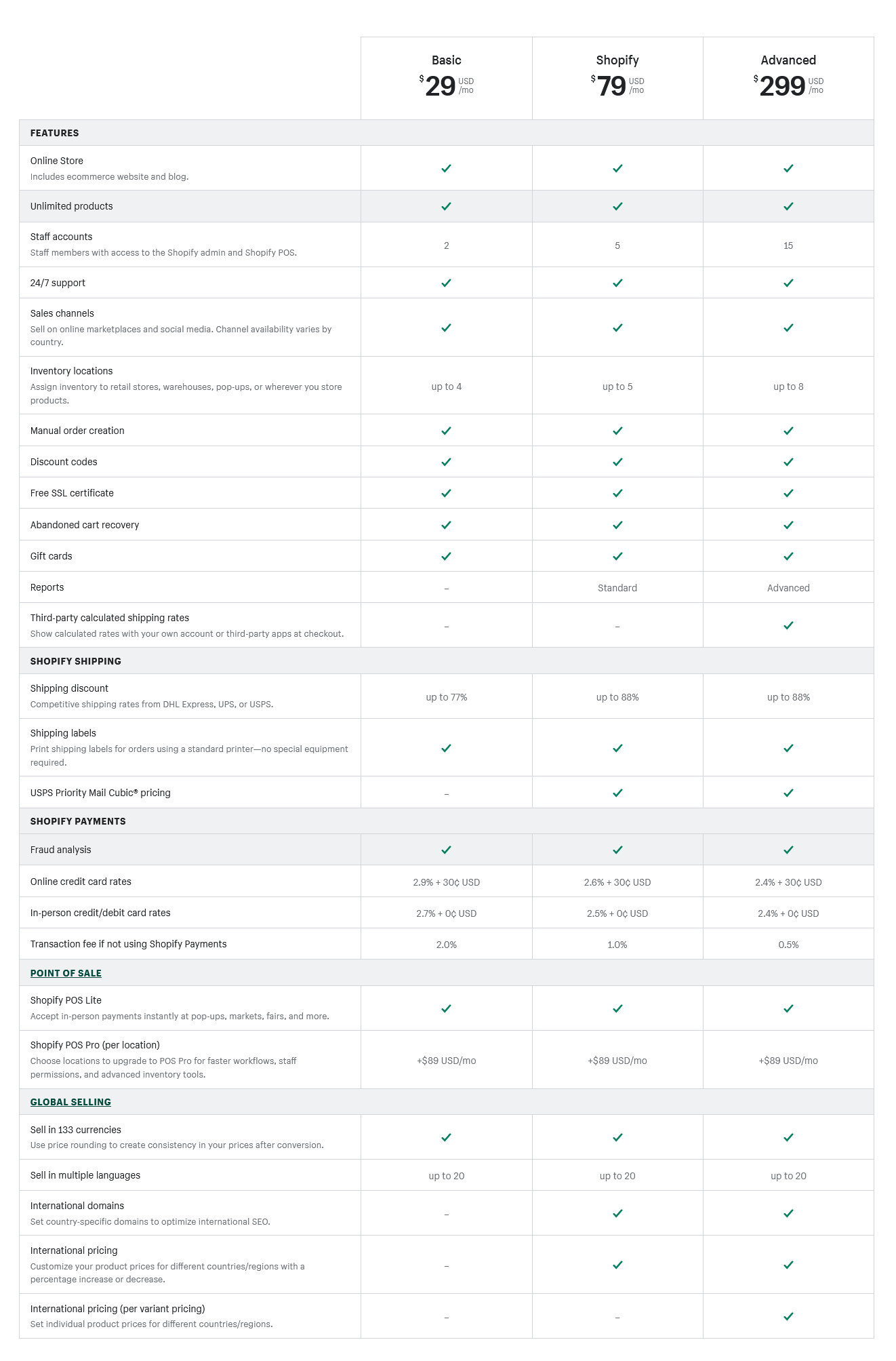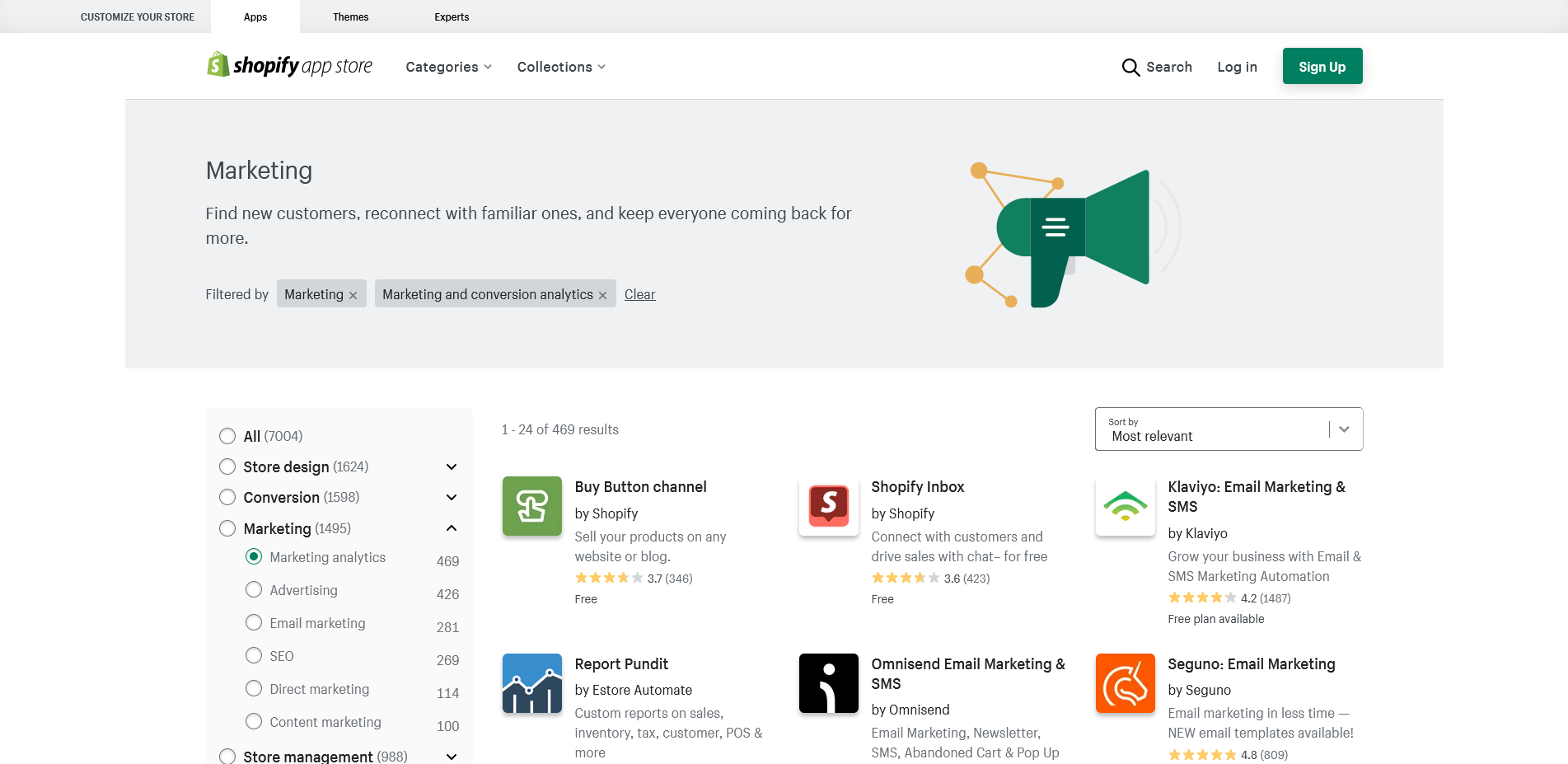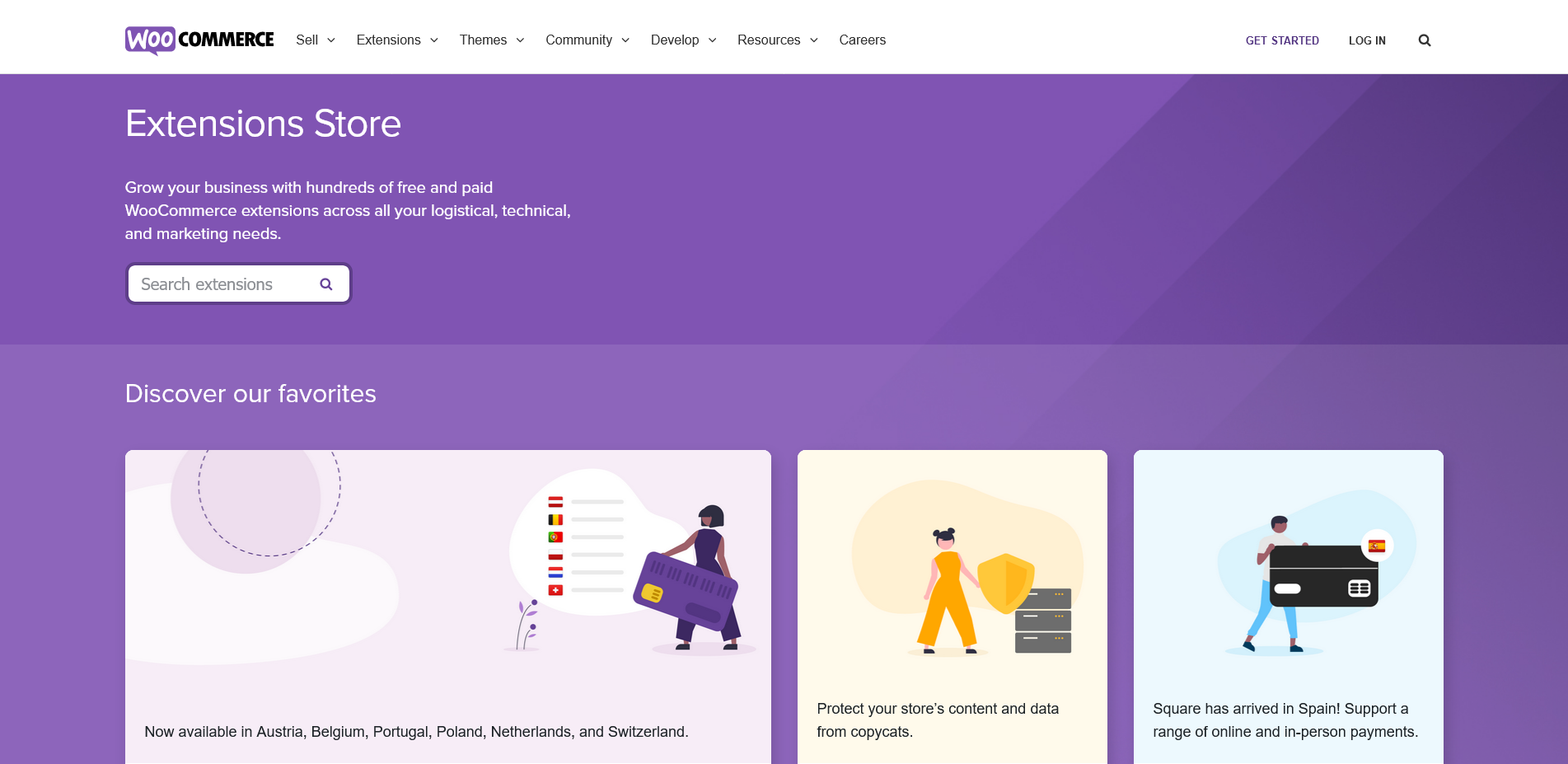[2024] Shopify vs WooCommerce: Best Ecommerce Platform?
Shopify and WooCommerce are the two largest ecommerce platforms in the U.S. but which is bigger and, more importantly, which is better for your ecommerce store?
According to the latest ecommerce statistics, Shopify currently accounts for around 32 percent of market share in the U.S. while WooCommerce weighs in with 22 percent.
Both platforms provide a cost-effective and scalable solution for aspiring store owners with big plans. They help you create a store, collect payments, process orders, and add content. They can help you whether you are a casual dropshipper or an enterprise business—or almost anything in between.
A high-quality ecommerce platform is the foundation of any successful ecommerce business and can save you time and expense with managing the back-end of your business while also providing a slick experience for users and helping them discover your products.
But there are important differences between Shopify and WooCommerce. Here, we take a look at both platforms side by side so that you can decide which is best for your needs…
Shopify overview

Shopify was born in Canada in 2006 and has risen to become an ecommerce powerhouse in recent years.
Its flexible and user-friendly platform was specifically created for ecommerce, which is not the case with WooCommerce, Wix, and many of its competitors.
The standard Shopify plans are used by startups and small to medium-sized stores while the Shopify Plus enterprise offering has been adopted by major international brands like Fitbit Gymshark, Kylie Cosmetics, Chubbies and more.
It is relatively straightforward to upgrade from one to the other, meaning that your ecommerce business can remain with Shopify for the long haul, going up a level if and when required.
Main strengths
- Fast page-load speeds
- Easy to set up and use with its drag-and-drop page builder
- Many themes/templates available
- A good option for dropshippers
- A huge ecosystem of apps available
- Easy maintenance and good security
- Great support (chat and phone support)
- Many certified partners
- Integration with multiple sales channels
Main weaknesses
- SEO performance
- Content marketing features are not the best
- Less customizable without using additional apps (checkout not customizable)
- App fees may increase costs
- Rigid URL structures
- Relatively few free themes
WooCommerce overview
WooCommerce started in 2008 as a plugin for WordPress called WooThemes, providing general website builder software before deciding in 2017 to focus exclusively on ecommerce.
WooCommerce only works with WordPress stores. It is free and open-source software just like WordPress. Many small and medium-sized businesses looking for an attractive, affordable store with low ongoing costs use the platform.
As well as providing a strong ecommerce user experience on both mobile and desktop, it offers a range of themes and features that help you sell and market your business.
Depending on the level of functionality required, a good choice of extensions and plugins is available to choose from to help you build a more sophisticated site—though you will likely need the aid of a WordPress developer to achieve what you want.
Main strengths
- Value for money
- Strong on SEO and content marketing
- Seamless integration with WordPress sites
- Full development control over the store
- Extensions and plugins available for extra customization and functionality
- Community of WordPress experts available for support
Main weaknesses
- No hosting provided (good hosting can be expensive)
- Support issues are often steered towards the hosting platform (can go round in circles)
- Speed can be an issue
- Requires some tech skills (the “trade-off” for greater developmental control)
- Extensions and plugins may increase costs
Shopify vs WooCommerce: What do you get for your money?
You don’t need to be a mega brand to use either Shopify or WooCommerce. Both provide excellent options for small and medium-sized businesses, even if you are just starting up.
Let’s take a look at what you get for your money from the Shopify and WooCommerce plans…
Shopify pricing
Shopify is not the cheapest option around but it is a very established platform that knows ecommerce inside out.
Besides, price isn’t everything. Cheaper plans may not provide the same reliability, user experience, scalability, and all those lovely elements that help to establish and grow a business.
There is no free plan with Shopify but there is a 14-day free trial.

Shopify provides three plans ranging from $29/month for the Basic plan up to $299/month for the Advanced plan:
You may see a Shopify “Lite” plan for $9 per month too. Bear in mind that this does not allow you to actually build an ecommerce store. It only allows you to add BUY buttons to Facebook or WordPress.
Note also that with the prices quoted, paying upfront for 12 months brings a 10 percent discount and 24 months’ payment upfront is rewarded with a 20 percent discount.
Here’s what you can expect from the $29/month Basic plan, the $79/month Shopify plan, and the $299/month Advanced plan:

All plans come with an SSL certificate, a blog, unlimited products, fraud analysis, and Shopify POS Lite.
The Basic plan may be fine if you are just starting up. But you will need one of the more advanced plans if you want to:
- Sell internationally
- Operate with more than two staff accounts
- Have more than four inventory locations
- Receive reports
- Use third-party calculated shipping rates
Transaction fees (credit card or debit card rates or a percentage transaction fee if not using Shopify Payments) are charged on top of the monthly fees, and these are discussed below.
Any fees payable to app providers are also additional. Many paid third-party apps integrate with Shopify and provide additional functionality for marketing (e.g., SEO, reviews, email marketing), back-end processes (e.g., inventory or accounting) or user experience (e.g., live chat, shipping options).
Enterprise customers may want to consider Shopify Plus. However, the $2,000/month starting point means that only very high-volume stores and established brands will consider this option.

WooCommerce pricing
WooCommerce is a free WordPress plugin (and WordPress is free too). There are thousands of free themes, many of which have been optimized for WooCommerce. But that is only part of the story.
A major factor to bear in mind with WooCommerce is that the hosting costs for your WordPress site are extra. WooCommerce and WordPress both recommend hosts like SiteGround, WPX, Bluehost, and Pressable but monthly costs can range from a few dollars up to several thousand dollars.
Most serious ecommerce stores will need managed WordPress hosting—not GoDaddy or a $5 per month plan. Managed hosting is not cheap.
You also need to factor in the associated domain name costs. And, while many features are provided for free, you might have to pay for extensions to add functionality to your store, such as one-click upsells and subscriptions. These incur annual costs that add to your overall spend with WooCommerce.
Hosting, domain names, security, and all the files that create your store are your responsibility. These additional costs and headaches are the “trade-off’ for having more control. Some store owners prefer this but it is not generally for anyone with no in-house technical expertise.
Shopify offers less freedom of choice but does include security, hosting, etc. in the monthly fees. You’re not dependent on an external server and, with Shopify, if there’s a support issue, you won’t be asked to call the hosting service.
Shopify vs WooCommerce: Payment gateways and transaction fees
Shopify has its own payment gateway called Shopify Payments, which allows you to receive payments without setting up a third-party payment provider or merchant account, saving on transaction fees.
WooCommerce provides WooCommerce Payments, a similar offering allowing you to manage payments directly from your dashboard. You can also accept major credit cards, connect with Stripe and PayPal and integrate with other payment gateways through the platform.
Shopify supports over 100 payment methods outside of its Payments offering. This is a testament to the international reach and ecommerce-centric approach of the platform. Additional card processing fees apply for these payments.
Transaction fees must be factored into the monthly running costs of your store. Shopify charges you according to the type of plan that you select…
Shopify Basic plan:
- 2.9% + 30 cents transaction fee for each online credit card transaction
- 2.7% + 30 cents on any in-person transactions
- 2% if not using Shopify Payments
Shopify plan:
- 2.6% + 30 cents transaction fee for each online credit card transaction
- 2.5% + 30 cents on any in-person transactions
- 1% if not using Shopify Payments
Shopify Advanced plan
- 2.4% + 30 cents transaction fee for each online credit card transaction or in-person transactions
- 0.5% if not using Shopify Payments
Sone of the apps you install with Shopify may also charge a cut of your sales, which is another potential cost to be aware of with Shopify.
With WooCommerce Payments, you still have the standard credit card processing/transaction fees for the U.S. (slightly more outside of the U.S.) but there are no extra transaction fees for not using WooCommerce Payments:
- 2.9% + $0.30 for each transaction made with U.S.-issued credit or debit cards
- An additional 1% fee for cards issued outside the U.S.
Eligible merchants can also access instant deposits using WooCommerce Payments. where the money arrives within 30 minutes rather than two days.
However, bear in mind that if you have problems with accepting or receiving payments with WooCommerce, you may have delays in sorting them out—if the support team cannot help you, you may need to hire external technical expertise.
Shopify is designed to work seamlessly with payment collection and, though you pay for the privilege, it is headache-free in most cases.
Shopify vs WooCommerce: Apps and integrations
Virtually all serious ecommerce platforms work by integrating with other apps, to some extent.
The shopify app ecosystem is well-renowned and currently includes around 6,000 apps. How many apps you need to install will depend on the functionality, back-end processes, and level of marketing support you require for your store. Other apps help with store design, social media, sourcing and selling products, etc.
Shopify merchants (whether dropshipping or multichannel selling) can interact with the app store and download both free and paid apps. Paid apps can incur monthly fees ranging from $5-$250.

WooCommerce also offers a variety of plugins and “extensions” to integrate third-party services that improve your store.
Most users find that these extensions can add significantly to monthly costs (whereas many of the apps for Shopify are free). Dropshippers in particular may end up paying more through WooCommerce because of the need for paid apps to use the AliExpress and Oberlo platforms.

One of the stronger points of the WooCommerce platform is in marketing automation. Free extensions can help you promote your store (more so than with Shopify). For instance, email marketing services like Klaviyo, Drip, and MailChimp can be integrated easily with WooCommerce.
Shopify vs WooCommerce: Speed, SEO and mobile performance
Page load speed is important for user experience and also Google rankings. Slow speeds can harm rankings and send less traffic your way.
Shopify is built for ecommerce transactions and fares well for page load speeds. It generally outperforms its competitors in this respect and few would doubt that Shopify pages load a little faster than WordPress WooCommerce pages.
To match the speed of Shopify, a WooCommerce store is likely to require considerable development work, which gets expensive. Even then, unless your site is hosted by a premium hosting service, it can be tough to match.
SEO is also a key performance factor for any ecommerce store. Shopify provides some limited built-in SEO tools to improve your search rankings (e.g., tools to edit metadata, URLs, image ALT texts, etc.). Free and paid SEO apps are also available to improve rankings.
WooCommerce offers plugins to help with this and most WordPress users are accustomed to adding SEO plugins like Yoast and All In One SEO.
With mobile performance, Shopify fares a little better than WooCommerce. Shopify has been accused in the past of not creating enough free mobile-first themes but that has changed in recent times.
All themes/templates provided by Shopify and WooCommerce are mobile responsive but mobile-first is the way to go in the future.
Final verdict: Shopify or WooCommerce?
Your choice between Shopify and WooCommerce may come down to:
- Whether or not you are a WordPress fan
- Whether you want an ecommerce store that gives you great design flexibility or removes the headaches
- You have the time and technical expertise to look after security, hosting, and other matters
Shopify can help you establish and scale up your store, selling an unlimited number of products internationally without having to hire any technical expertise or security concerns. If you do have an issue, a
Shopify support team is available and willing to solve it.
On the negative side, you have limited flexibility with many aspects of store setup, notwithstanding the huge array of apps that helps you customize the look, feel and performance of your store.
With WooCommerce, you get the flexibility (within the confines of the WordPress environment) but it means that it can take up more of your precious time and resources.
Both platforms provide great value but Shopify is more of a total ecommerce platform accustomed to large sales volume and growing businesses. It is also more geared towards international ecommerce and cross-border selling opportunities than WooCommerce.
